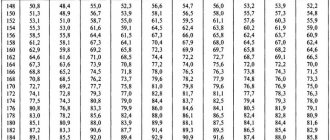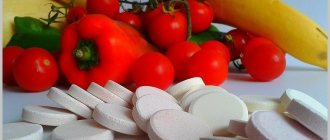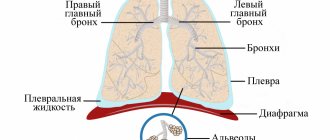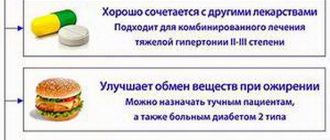Hypertension is a pathology accompanied by a persistent increase in blood pressure above 130/90. It entails changes in the functioning of internal organs, as well as disruption of a person’s well-being. This disease is progressive.
Causes of hypertension
The main reason is a decrease in the lumen of small vessels, impeding blood flow. The pressure on the walls of blood vessels increases, and blood pressure increases, because the heart muscle needs more effort to push blood through the bloodstream.
The following risk factors for developing the disease are identified:
- the age of the person (women over 65 years old, men over 55 years old);
- cholesterol level (above 6.5 mmol/liter);
- heredity (presence of cardiovascular diseases in relatives);
- smoking;
- obesity;
- diabetes;
- sedentary lifestyle of an elderly person.
Causes of the pathological condition
A large number of modern people suffer from high blood pressure, and such disorders can be caused for various reasons.
The main triggers of hypertension include stress and constant worry. Often the disease is hereditary. The environment plays an important role in the development of the disease.
The more a person succumbs to stressful situations, the greater the likelihood of a hypertensive crisis. It is worth noting that pressure levels of 220 to 110 are dangerous to human health and can lead to irreversible consequences.
Basically, medicine distinguishes 2 types of disease. The first option is hypertension, which is a chronic disease of the cardiovascular system. At the moment, the exact causes of the disease have not been established.
The second type is symptomatic arterial hypertension. The violation is quite pronounced and can be life-threatening.
A strong increase in blood pressure can be caused by a high content of fatty acids in the diet. Basically, such components are present in sour cream and butter, coconut and palm oils. Don't overlook the fats found in cheese, chocolate, sausage and other not-so-healthy foods. The food is high in calories, although at first glance it does not seem too fatty.
Another provocateur of hypertension is high salt content in food. Therefore, you should give preference to fresh and healthy products rather than packaged options.
Another cause of the disease is alcohol. Some people believe that alcohol lowers blood pressure, but this opinion is wrong. Alcohol may not be harmful in moderate doses, but when consumed in large quantities, the liquid causes heart palpitations. In addition, the composition may contain components that provoke the appearance of high blood pressure.
A sedentary lifestyle and constant stress are also provocateurs of hypertension. Many modern people are engaged in work that requires intellectual activity, which often provokes overexertion.
How to take measurements
A person’s blood pressure consists of two indicators. The first, higher one, shows systolic pressure - the pressure inside the arteries when the heart fills them with blood. The second number expresses diastolic pressure, that is, the pressure inside the arteries when the heart breathes between beats.
Normally, blood pressure gradually increases from 90/60 mmHg. Art. at birth and up to 120/80 in a healthy adult. If a person jogs or drinks alcohol, the blood pressure will rise noticeably, but this is not a cause for concern.
A person’s blood pressure rises and falls under the influence of emotional state and physical activity. For one person, a reading of 130/90 mmHg is considered normal, while another person feels unsatisfactory in such cases.
If you have persistently high blood pressure, you should visit your doctor. With this pathology, the heart works at its limit. In addition to blood vessels, deformations occur:
brain, eyes, kidneys.
If the pressure is 140/90 mmHg. Art. and higher with measurements of more than two, then we can talk about hypertension. When the pressure is 200/120 or higher, urgent medical attention is needed. If you have diabetes and high blood pressure, treatment should begin at 130/80 mmHg. Art.
Scientists include people whose blood pressure is more than 120/80 mmHg. Art, in a category that has a chance of developing hypertension. This condition is called prehypertension
Prehypertension increases the likelihood of system and organ defects, so it is important to begin timely treatment.
Because hypertension often has no symptoms, it is called the “silent killer.” It is typical that symptoms may not appear even with serious complications. The disease is severe when the pressure is 220/110 mmHg. Art and above provokes:
vision problems, heart attack, stroke, kidney failure.
Hypertension leads to heart failure, a common but very dangerous disease that causes breathing problems. It is generally accepted that people with high blood pressure have malignant hypertension with a diastolic pressure of more than 130 and a systolic pressure of more than 200 mmHg. Art. This type of hypertension is a very serious disorder, since various organ damage occurs very quickly.
High blood pressure can be controlled and corrected. To do this, you must first of all systematically measure your blood pressure.
How does blood pressure increase at different ages?
- If high blood pressure appears in childhood. We are definitely talking about kidney pathologies, heart defects and congenital anomalies of large vessels.
- In adolescence, the cause is often endocrinological diseases. This also includes hormonal imbalance, overeating, an inactive lifestyle - all this becomes the main factor for the development of primary hypertension, which is common today.
- After the age of 30, hypertension is already a multifactorial disease and can be controlled with antihypertensive drugs and lifestyle changes, since the main causes of the disease are stress, sedentary work, night shifts, etc.
- After the age of 40, the development of hypertension is dangerous due to its complications - the risk of heart attack and stroke increases. Therefore, at this age you need to control your blood pressure and take prescribed medications on time.
What is a hypertensive crisis
A hypertensive crisis is a serious condition that requires emergency medical attention. This condition is caused by a sharp increase in blood pressure. In world medical practice, hypertensive crisis is divided into:
- Complicated;
- Uncomplicated.
In a complicated hypertensive crisis, many organs are at risk: lungs, brain, heart. In this type of crisis, the patient needs to be taken to the hospital as soon as possible, where experienced cardiologists will help stabilize the situation.
An uncomplicated form of crisis in most cases does not require hospitalization.
It is important to provide first aid to a person in a timely manner.
Let's talk about emergency medical care for those whose blood pressure has risen greatly. It is important not to get confused and take the necessary auxiliary measures in time:
- Place the patient in a comfortable position, with his elbows on pillows (place him in a reclining position on the sofa).
- Speak in a calm voice to calm him down. Excessive excitement will lead to increased heart rate and increased blood pressure.
- Provide oxygen access. Open the window and free your neck from the tight collar.
- Give an antihypertensive medication that the patient usually takes.
- Give a drug under the tongue to quickly lower blood pressure: captopril, kopoten, cordaflex. Any drug of this type that is available will do.
- If you complain of pain in the sternum, it would be a good idea to give a nitroglycerin tablet under the tongue. The medicine will help to quickly dilate blood vessels, which will improve blood circulation.
- If there is a chill, cover the patient and offer a warm heating pad.
- If half an hour after trying the steps the patient’s situation has not improved, immediately call an ambulance.
A person who is alone at home during an attack should act according to the following scheme:
- Call an ambulance;
- Take/swallow a tablet to lower blood pressure;
- Opening the door lock.
Having told what to do if the pressure is 220 to 140, we provided an algorithm of actions for providing emergency assistance to the patient. Let us now consider what the lifestyle should be like for people suffering from high blood pressure:
- Only healthy food (no fast food, less salt, more vegetables, fruits and greens, no cigarettes and alcohol);
- Normalization of weight (sports appropriate for age and health, walks in the fresh air, various physical activities);
- Stabilization of sleep (setting a daily routine, observing physiological age norms);
- Reducing stress levels (more active recreation in your free time, refusing to watch TV, getting involved in some activity - a hobby, taking sedatives: glycine, valerian);
- Regularly measure your blood pressure and take antihypertensive medications prescribed by your doctor.
Remember, taking care of your heart and health is in your hands.
Timely consultation with a doctor, a healthy lifestyle, and regular intake of necessary medications are the key to your safety.
When a pressure of 220 to 140 becomes the norm for you, then this is a dangerous sign. The heart quickly wears out at such a rhythm, and years of life are shortened. Don’t become the cause of your own illness, treat your health wisely.
Why is hypertension so common?
Over the past two hundred to three hundred years (and this is a poppy seed, figuratively speaking, like a time period in the chronology of humanity) everything has changed. Thanks to technical progress, a person has lost the need to move a lot, and the flip side of scientific and technological progress is the payment for the acquired progress in the form of physiological losses. This is overeating, physical inactivity: there is more food, but there is much less movement. An imbalance has occurred that evolution cannot correct in a couple of centuries: our body has been programmed for millennia for certain proportions of energy consumption/expense.
Constantly high blood pressure
The third stage of hypertension is the most severe. In this case, the constant pressure exceeds 180/100 mmHg. Art. Gradually a person gets used to this condition, but the heart works under high load and wears out a lot. Patients often experience:
- cardiac ischemia,
- heart rhythm disturbance,
- angina pectoris
- the formation of heart failure.
Thus, at any age of a person, a blood pressure of 120/80 mm Hg is considered normal. Art. with slight deviations in both directions. If blood pressure systematically increases to 160/100 mm Hg. Art. or remains at this level for a long time - this indicates the initial stage of hypertension.
Regardless of what age a person is, he should immediately consult a doctor for a thorough examination. The doctor sets the task of clarifying the diagnosis by conducting diagnostics. After identifying concomitant diseases, specific treatment is prescribed.
The examination includes:
- examination by a therapist,
- study of medical history (heredity, work, bad habits, general lifestyle),
- general clinical analysis of urine and blood,
- blood for cholesterol and sugar levels, ECG,
- consultation with an ophthalmologist, fundus examination,
- examination by a neurologist.
If the need arises, an endocrinologist or cardiologist should be involved in the diagnosis. The following may also be prescribed:
- Ultrasound of the heart,
- MRI,
- 24-hour blood pressure monitoring.
After the examination and study of the medical history, the doctor reviews the results and forms a treatment plan. In severe stages of hypertension, the person should be hospitalized for more intensive treatment.
It is important to visit a doctor in any case, at least to find out what exactly to do if your blood pressure increases. . The doctor should measure the patient’s blood pressure and consider lifestyle modifications
In particular you need:
The doctor should measure the patient's blood pressure and consider lifestyle changes. In particular you need:
- weight loss,
- proper diet with a reduction in fat and salt,
- moderate physical activity,
- giving up alcohol, smoking and coffee,
- walks in the air.
It is necessary to consume vegetables and fruits rich in potassium and magnesium in your diet, including:
You should buy a tonometer and take measurements twice daily - in the morning after getting up and in the evening before going to bed.
It is necessary to take medications only as prescribed by your doctor. All medications for high blood pressure are prescribed for a certain time to achieve a lasting result.
Diuretics are used, for example:
These products reduce swelling by removing excess fluid. Therapy begins with diuretics, if there are no such diseases:
- diabetes,
- renal failure,
- lactation and pregnancy,
- gout,
- allergy.
Beta blockers are also used:
These drugs reduce blood pressure by dilating blood vessels and reducing the load on the heart muscle. The medicines should not be taken if you have allergies, bradycardia or pregnancy.
These drugs dilate blood vessels and are contraindicated in cases of renal impairment and pregnancy.
Calcium antagonists include:
These drugs show effectiveness in hypertension, accompanied by increased heart rate and heart rhythm disturbances. The drugs should not be used during pregnancy or bradycardia.
Quite often, combinations of funds from different groups are used. May be assigned:
- sedatives,
- phytotherapy,
- medicines to strengthen the heart muscle,
- statins and other drugs.
During pregnancy, high blood pressure is common, especially after the 20th week. There is a physiological reason for this - the volume of circulating blood increases due to the fetus, so the heart works harder, the pulse quickens and blood pressure rises. As a rule, the figure does not exceed 140/90 mmHg.
If a woman complains of unsatisfactory health in the first half of pregnancy due to high blood pressure, most often this indicates the appearance of hypertension.
Increase in pressure to 160/100 mmHg. Art. and more at any stage is a reason for hospitalization, since the fetus suffers with this pressure. If you have high blood pressure in the second half of pregnancy with a pathological urine test, you should consult a doctor, since there is a high risk of eclampsia, a serious complication.
Every morning a person with hypertension should begin with measuring their blood pressure. Treatment should only be carried out under the supervision of a physician. The video in this article will help you figure out what to do with high blood pressure and what to do.
Source: gipertonija.ru
Prevention
Methods for preventing the disease are primary and secondary.
Primary prevention is necessary for healthy people who are predisposed to pathology. You need to go in for sports, fitness, do morning exercises, swim. It is important to consider that the loads should be moderate or light. A person also needs to give up bad habits, limit the consumption of salt, carbohydrates and animal fats. The diet should be enriched with calcium and potassium (dairy products, nuts, dried fruits, etc.).
Secondary prevention is carried out in patients who have been diagnosed with hypertension. It includes monitoring blood pressure, regular visits to the doctor and non-drug therapy. It is recommended to conduct acupuncture sessions, massage, and take herbal remedies and antioxidants.
The ABC-Medicine clinic provides a full range of services for the diagnosis, prevention and treatment of hypertension. Call us at + and our consultants will answer all your questions in detail and make an appointment with a cardiologist.
What to do at home during a hypertensive crisis
With a sharp increase in pressure to a reading of 200 to 100 or higher, a hypertensive crisis is diagnosed. It is accompanied, in addition to the typical symptoms of hypertension, by severe dizziness, loss of orientation, nausea, in some cases leading to vomiting. At the same time, the patient begins to feel causeless fear and excitement, he throws himself into a cold sweat, then into a fever.
When symptoms first appear and you suspect high blood pressure, you must call an ambulance, whose doctors will tell you what to take in this case. It is not advisable to give medications without examination by a specialist.
Important! To improve the patient’s condition, it is necessary to ventilate the room before the team arrives (in cold weather, open the window). . How to reduce high blood pressure using folk remedies? You can use a special compress
To prepare it, mix apple cider vinegar and warm water in equal parts. Dip a towel into the mixture, squeeze lightly and wrap it around the patient’s legs (they should be down). After 10 minutes of the procedure, remove the compress. Due to its mild irritant effect on the skin, vinegar promotes blood flow from the head.
How to reduce high blood pressure using folk remedies? You can use a special compress. To prepare it, mix apple cider vinegar and warm water in equal parts. Dip a towel into the mixture, squeeze lightly and wrap it around the patient’s legs (they should be down). After 10 minutes of the procedure, remove the compress. Due to its mild irritant effect on the skin, vinegar promotes blood flow from the head.
First aid is described below on how to reduce blood pressure if a hypertensive crisis has manifested itself previously:
- We lay the patient down so that the head is elevated. You can give him a sitting position on the floor. Even if the patient does not want to sit still, it is necessary to distract him and calm him down. Motor activity during a crisis is fraught with complications.
- We give the patient a dose of the drug to lower blood pressure, which he has already taken as prescribed by the doctor. For unbearable headaches, we give a diuretic, which is also already familiar to the patient.
- Elimination of a hypertensive crisis must be carried out gradually. Reduce blood pressure sharply by more than 30 mm Hg. Art. You can’t do it right away, as this leads to heart complications.
Symptoms
An increase in blood pressure to 220/140 is often accompanied by general malaise, weakness and impaired autonomic function.
- Headache, predominantly of a pressing nature, especially in the back of the head. The peculiarity in this case is that it is not possible to relieve pain using analgesics or antispasmodics, since the pain is caused by poor blood supply to the brain and a decrease in vascular tone.
- Dizziness, spots flashing before the eyes.
- The limbs are cooled.
- Decreased visual acuity.
- Noise in ears.
- Facial redness.
- An increase in the number of heart contractions, arrhythmia is possible.
- Increased sweating.
- Nausea, vomiting.
- Panic attacks, anxiety. The patient feels the pulsation of his own blood in his ears and head, pain in his heart begins to frighten him, and fear for his life arises, which only worsens the situation.
In rare cases, clouding of consciousness, increased body temperature, convulsions, shortness of breath, hard breathing, and painful phenomena in the heart occur.
If a person suffers from high blood pressure for a long time, then the symptoms can be moderate and even erased. There are cases when, with a pressure of 220/140, the patient was bothered by a slight pain in the head, while irreversible consequences were already in full swing in the body. This is dangerous, therefore, at the slightest suspicion of hypertension, you need to take a tonometer and measure the pressure, and if it increases, call an ambulance.
Reduce blood pressure quickly using folk remedies
There are several effective ways. To reduce blood pressure using folk remedies, quickly take the following measures:
- Soak your feet in hot water for 10 minutes.
- Soak a cloth in vinegar (apple or table vinegar) and apply to your heels.
- Place mustard plasters on your calves and shoulders.
Herbs for blood pressure
Remember a few recipes:
- 1 tbsp. l. motherwort and hawthorn, meadowsweet and dried grass and 1 tsp. Mix valerian root and pour half a liter of vodka. Leave the anti-pressure herbs like this for 2 weeks. Drink 1 tbsp three times a day. l. (before meals).
- Make a strong mint infusion. Drink it, and also apply lotions to your neck, back of the head, and shoulders.
How to lower and normalize blood pressure?
First of all, if you have high blood pressure, you should measure your blood pressure a couple of times a day. Next, you should know which medications you need to use. It is also important to change the way you live. The following recommendations should be followed:
- Proper nutrition: reduce consumption of fatty, fried and salty foods.
- Physical activity: it is necessary to perform exercises designed to restore the body after disturbances in the functioning of the heart and blood vessels.
- Stop drinking coffee.
- Get rid of bad habits.
Drugs for high blood pressure
Under no circumstances should you self-medicate arterial hypertension. Each person’s body is individual, including in its reaction to antihypertensive drugs. Their selection should be made by a doctor based on medical history, severity of the disease and age of the patient.
The standard treatment regimen includes diuretics, beta-blockers, antihypertensives and sedatives. The first group of drugs removes excess fluid from the body, thus relieving swelling. Most often prescribed:
"Furosemide"; "Indap"; "Arifon".
They should not be taken if you have diabetes, kidney failure or during pregnancy.
Beta-blockers have a cardiac effect, that is, they reduce the tone of the heart muscle, reduce heartbeat, and improve vascular conductivity. This group includes: “Metoprolol”, “Bisoprolol”, “Alprenolol”, “Timolol”, “Carteol”.
"Indap" is prescribed for high blood pressure
Among antihypertensive drugs, Enalapril is very effective. It dilates blood vessels, reduces the load on the heart muscle, improves blood circulation and respiratory function, while providing a slight diuretic effect. As an alternative, Ramipril, Perindopril, Enap, Noprilene are used.
If there is a sharp jump in blood pressure to 220/120, what should you do? It can be removed with injectable medications. The injection must be given by a qualified healthcare professional because the dosage and route of administration vary.
Arterial hypertension is a very common pathology, so there are many drugs for its treatment. They are quite potent, so the doctor selects the dosage and treatment regimen.
What is a life-threatening crisis?
The Civil Code has a fairly extensive classification. These include life-threatening and non-critical crises. In the first case, the consequences can be the most severe.
Among them:
- Acute myocardial infarction (AMI) is the name given to one of the clinical forms of ischemic disease, which is characterized by the development of ischemic necrosis of the myocardial area associated with a relative lack of blood supply;
- Subarachnoid hemorrhage is a complex pathology, which consists of spontaneous or trauma-induced outflow of blood into the subarachnoid space of the brain;
- Pulmonary edema - it is understood as acute pulmonary failure, associated with increased removal of transudate from the capillaries that enters the pulmonary structures; this is fraught with infiltration of the alveoli, as well as a sharp disruption of gas exchange in the respiratory organ;
- Unstable angina is a period of coronary heart disease that threatens the development of AMI and other associated complications; the period is intermediate between the stable course of ischemia and the complication;
- Acute left ventricular failure - with it a picture of cardiac asthma develops, an acute increase in volume in the small circulatory system occurs with the development of congestion;
- Acute hypertensive encephalopathy is the name given to an emergency condition that is dangerous due to cerebral edema.
All these conditions cannot be treated at home; the crisis must be stopped and corrected only in a hospital setting.
Why is hypertension incurable?
It sounds scary, but there is more truth in this thesis than intimidation. Hypertension in most cases is an irreversible disease, but there are caveats. If you notice the disease in time (which, alas, rarely happens), then even without drug therapy you can overcome high blood pressure. And put this problem aside for many years. But you need to rely not on medicinal teas and massages, but on special physical training, which corrects pathologies of the spine and normalizes blood flow, including the brain
The center for regulating pressure is located in the brain, which is why it is so important that it works flawlessly - so that no pathological processes in the cervical spine stimulate it, thereby increasing the pressure. But it’s not just about exercise therapy and a sore neck
It is worth noting that there are still debates about hypertension today. Extensive research has only brought scientists closer to understanding the mechanisms of the disease, but certainly has not given a clear answer. Humanity has been treating hypertension for more than a hundred years, everything was done empirically: they offered some medications but did not see results, refused, and prescribed others. Many people believe that vascular spasm is the basis of hypertension, but it is only a consequence and not the root cause.
Three important points about hypertension that a modern patient should know:
- It is generally accepted that each hypertensive person has his own cause of the disease. Some provoking factor triggers the activation of the renin-angiotensin system. If you find this factor and influence it, you can stop the progression of the disease.
- The more risk factors, the higher the chances of becoming hypertensive. When a patient does not like the “interrogation” at a doctor’s appointment, this is simply his personal ignorance. The doctor must know the basics about the patient’s lifestyle: whether he smokes or not, whether he abuses alcohol, how he eats, where he works, etc. This is how he considers those factors that together increase or decrease the chances of hypertension.
- This is a chronic disease and is not treated on a case-by-case basis. If you are prescribed to take pills, then maintain this long course. If you drink them only on days when blood pressure increases, it will continue to increase. The tablets not only reduce blood pressure “when needed,” they consistently keep it normal.
But, alas, the patient often seeks this knowledge only when the pressure is 220 to 110 and it is not clear what to do.
Causes and symptoms of high blood pressure
Normal blood pressure is 120/80 mm Hg. Art., but the deviation is within 10, and sometimes 20 mm Hg. Art. is not necessarily a pathology. The diagnosis of hypertension is established only in patients with consistently elevated values. The doctor takes measurements 3 times in 2 weeks; if the condition is stable and above normal, an appropriate diagnosis can be established. Mostly the pressure is 220 per 100 mmHg. Art. and higher occurs when the condition worsens in hypertensive patients.
People with hypertension can more easily tolerate high blood pressure, but even for them the condition is dangerous. To determine the patient's condition, it is necessary to measure pulse pressure, that is, the difference between the upper and lower marks of the tonometer. Normally, the difference is 30–50, ideally 40. The most dangerous condition is an increase in pulse pressure; the greater the difference, the higher the likelihood of complications. The most dangerous disorder is a heart attack. When levels decrease, the risk of heart failure is high.
What complications may arise?
Irreversible consequences appear that affect the kidneys, eyeballs, heart, blood vessels and brain. To avoid this, you need to stop the hypertensive surge in a timely manner.
Complications of pressure 220 to 140:
- Retinal angiopathy (impaired function of the blood supply to the eye, changes in the structure of the vascular wall), loss of vision;
- Stroke;
- Heart attack;
- Kidney and heart failure;
- Pulmonary edema.
According to statistics, providing medical care in the first 30 minutes makes it possible to reduce the likelihood of developing life-threatening consequences by 4 times!
Of particular note is the increase in blood pressure in women during pregnancy. Constant monitoring is important here, especially for women who have a history of hypertension or are currently experiencing it. Pressure should not be allowed to increase even to figures such as 160 to 120 mm Hg. This is a serious danger for both the unborn child and his mother. A woman should also not take medications on her own in case of high blood pressure. It is necessary to urgently consult a doctor and not refuse hospitalization, since even a single increase in pressure to 220 to 140 can cause acute oxygen starvation of the fetus and its death.
First aid tablets for high blood pressure
The list of drugs with this function is very extensive. According to the mechanism of action on the body, there are several groups of emergency tablets for high blood pressure:
- Diuretics. Diuretic drugs that remove excess fluid from the body in which salts are dissolved: Indapamide, Furosemide.
- Beta blockers. Medicines that stabilize the heart: Atenol, Leveton, Bisoprolol.
- Receptor blockers. Fast-acting drugs: Eprosartan, Losartan, Valsartan.
- Calcium channel blockers. Prevent calcium from penetrating into the tissues of the heart and blood vessels: Norvasc, Nifedipine, Amlodipine, Cardizem, Adalat.
- ACE inhibitors. The most effective and well-known remedies for high blood pressure, providing quick and long-lasting results: Berlipril, Captopril, Altan.
Mexidol for hypertension
The main active ingredient of the drug is ethylmethylhydroxypyridine succinate. The main function of Mexidol for hypertension is to make organs and tissues more resistant to oxygen starvation by preventing the harmful effects of free radicals. The medicine has a large list of indications. The tablets may cause minor gastrointestinal upset.
Mexidol is taken according to the following scheme:
- Twice or three times, 3-6 tablets per day.
- An easy course of treatment is 14 days, in difficult cases up to one and a half months.
- You should start and stop taking it gradually. First, over three days, the dosage is gradually increased from one or two tablets to the one recommended by the doctor, then it is also reduced until completely discontinued.
Nitroglycerin for high blood pressure
The drug acts instantly and is eliminated from the body in the shortest possible time. Nitroglycerin relieves heart pain in high blood pressure. The medicine is very often taken for angina pectoris. It can also be used for prophylaxis before physical activity, so that there is no increase in blood pressure as a result. Be sure to drink it as written in the instructions.
The whole tablet or a ladle should be placed under the tongue, and be sure to take a sitting or lying position. If there is no effect, the medicine is re-taken after 5 and 10 minutes, after which an ambulance is called. It is best to start systematically with half a tablet to avoid addiction. The regimen of use should be prescribed by a doctor after a detailed examination of the patient.
It’s sad that with all the advantages of Nitroglycerin, it has a lot of side effects and contraindications. People with individual intolerance to the drug may experience a sharp increase in heart rate, pain, dizziness, and near fainting. Nitroglycerin should not be taken if you have high intracranial pressure, glaucoma, heart attack and stroke, or kidney failure.
Anti-pressure tablet under the tongue
Such drugs are very popular because they act as quickly as possible. The pressure tablet should be dissolved under the tongue. Its components immediately enter the bloodstream and reach the heart muscle, bypassing the digestive organs. In this case, the substances do not come into contact with stomach acid, which negatively affects them. There are many medications taken under the tongue. It is worth describing the most popular ones.
Corinfar under the tongue
The active ingredient of the tablets is nifedipine (10 mg). Corinfar under the tongue quickly lowers high blood pressure, minimizes the load on the heart, and expands the lumen of blood vessels. The drug is used both occasionally for hypertensive crises and for regular treatment. It is indicated for those who suffer from arterial hypertension and angina pectoris. During a crisis, 1-2 tablets should be dissolved, kept under the tongue. The drug acts after 20 minutes, the effect lasts for 4-6 hours.
The medicine has a number of side effects, so you should take it only if prescribed by a doctor. Taking the pill can cause:
It is strictly forbidden to take Corinfar when:
- hypotension;
- lactation period;
- chronic heart failure;
- first trimester of pregnancy.
Physiotens under the tongue
The main active ingredient in this medicine is moxonidine. Tablets with 0.2 mg of the component are pale pink, with 0.3 mg - coral, with 0.4 mg - deep red. Physiotens under the tongue lowers high blood pressure by acting on certain receptors. The medicine works very quickly. If emergency assistance is required for a hypertensive crisis, one or two tablets with a dosage of 0.2 mg should be placed under the tongue. The daily dose should not exceed 0.6 mg. The drug has a number of side effects, but they appear only at the initial stage of administration and then disappear.
First aid
First of all, you need to quickly call an ambulance, and while you are waiting, you can take a number of measures:
- The patient should take a comfortable position - sitting (put a pillow under the lower back) or lying down (head raised).
- Provide fresh air access to the room.
- If the patient is chilling, cover him. You can take a warm foot bath for 10 minutes.
- If there is pain in the heart, then give nitroglycerin under the tongue.
- If the patient knows about his disease and takes a certain medicine prescribed by a specialist, then he must take it.
Rules for hypertensive patients
Having told what to do if the pressure is 220 to 140, we provided an algorithm of actions for providing emergency assistance to the patient. Let us now consider what the lifestyle should be like for people suffering from high blood pressure:
- Only healthy food (no fast food, less salt, more vegetables, fruits and greens, no cigarettes and alcohol);
- Normalization of weight (sports appropriate for age and health, walks in the fresh air, various physical activities);
- Stabilization of sleep (setting a daily routine, observing physiological age norms);
- Reducing stress levels (more active recreation in your free time, refusing to watch TV, getting involved in some activity - a hobby, taking sedatives: glycine, valerian);
- Regularly measure your blood pressure and take antihypertensive medications prescribed by your doctor.
Remember, taking care of your heart and health is in your hands.
Timely consultation with a doctor, a healthy lifestyle, and regular intake of necessary medications are the key to your safety.
When a pressure of 220 to 140 becomes the norm for you, then this is a dangerous sign. The heart quickly wears out at such a rhythm, and years of life are shortened. Don’t become the cause of your own illness, treat your health wisely.
Increased blood pressure and rapid pulse
Typically, with increased blood pressure, the heart rate always increases. This is how our heart tries to adapt to the increased blood pressure on the vascular walls. If the normal pulse is from 60 to 80 beats per minute, then with a pressure of 220 to 140 the number of beats can reach 100 or more.
However, there are completely opposite cases when, with increased pressure, the pulse goes beyond the lower limits of normal. This shows that the heart muscle is not coping with its task.
This is scary because when using antihypertensive drugs, for example, calcium channel blockers, not only the blood pressure decreases, but also the pulse, and if it is already low, then you can cause a heart attack, which will require urgent intervention from specialists and every second will be important. Therefore, it is important to pay attention to the pulse when measuring blood pressure.










